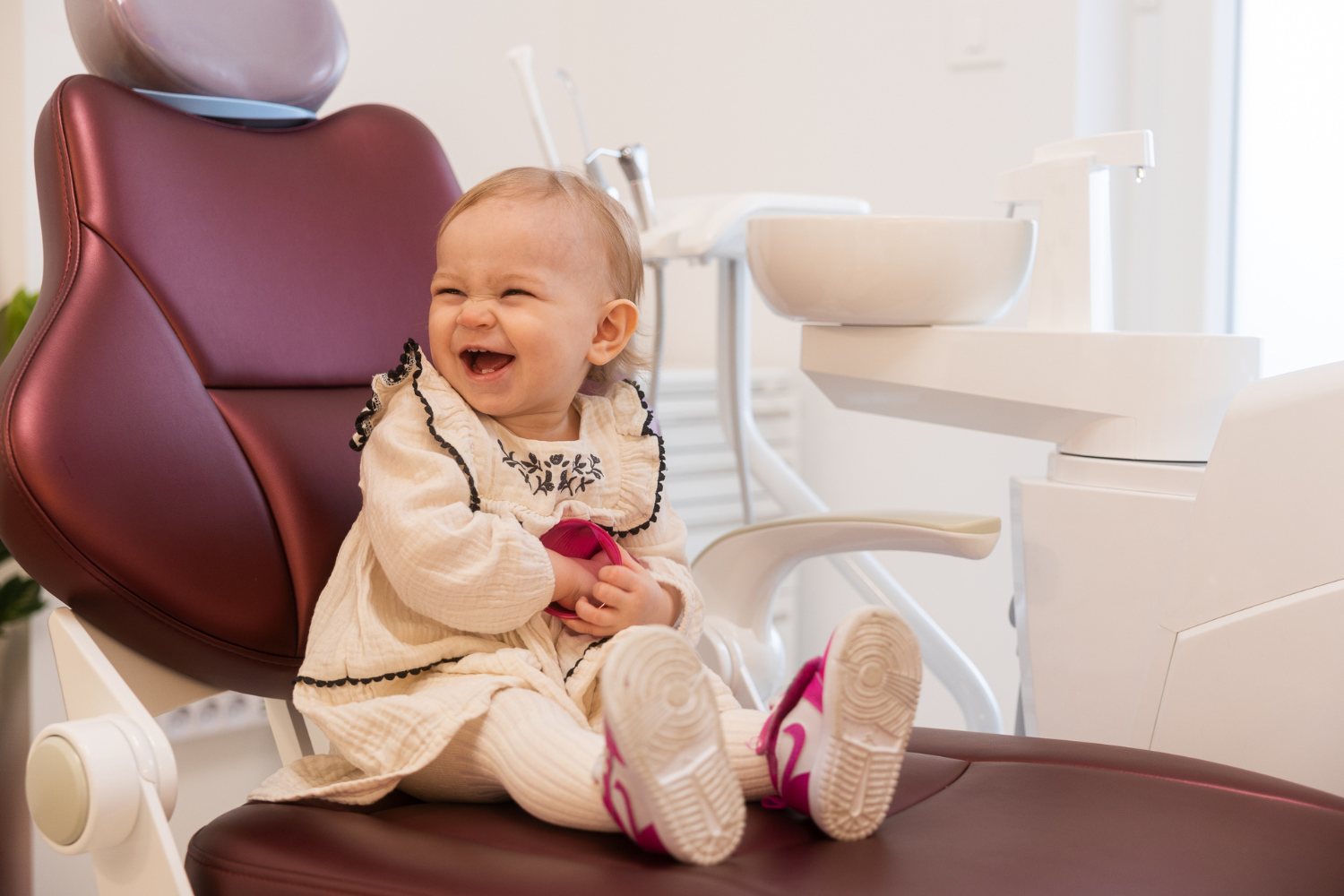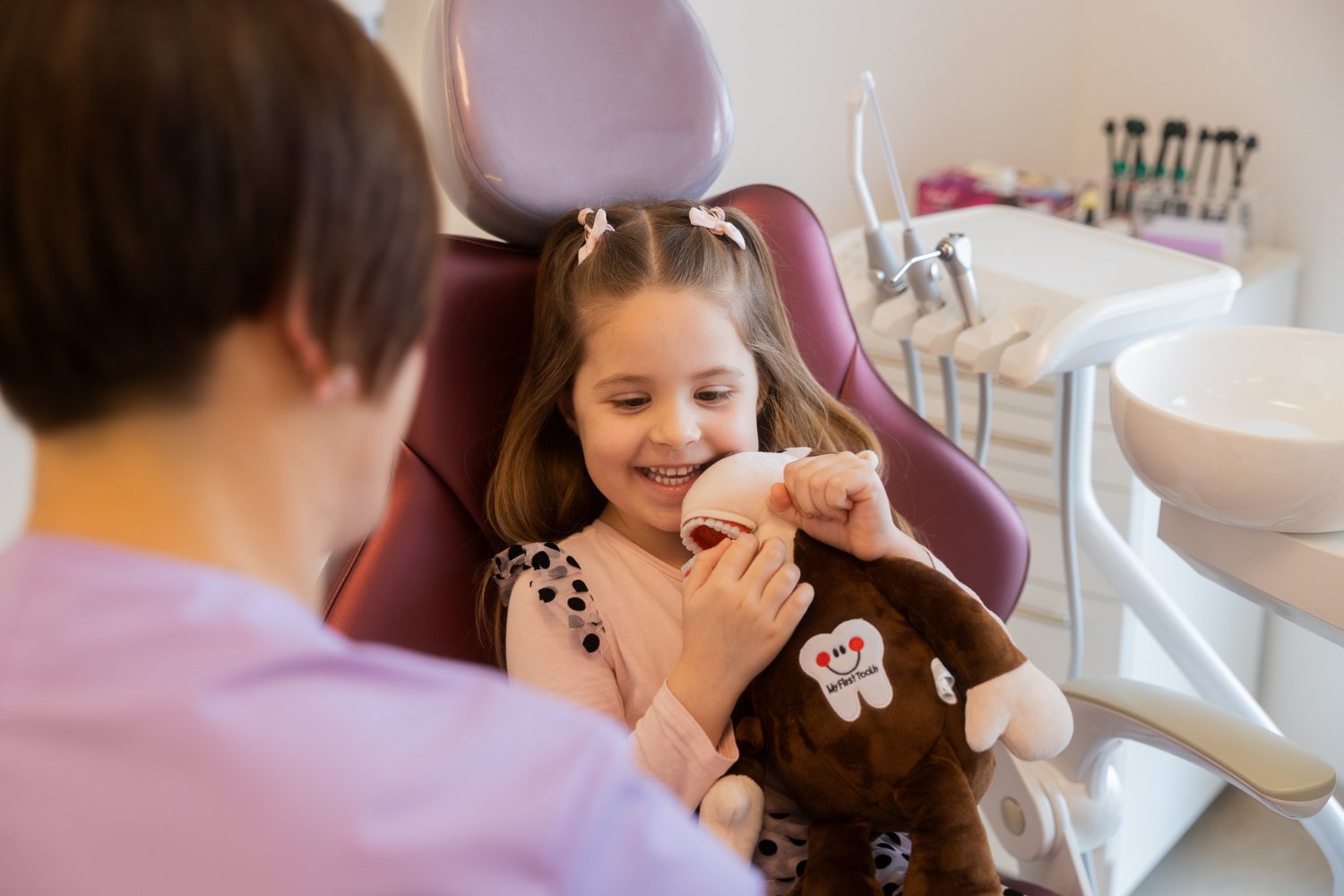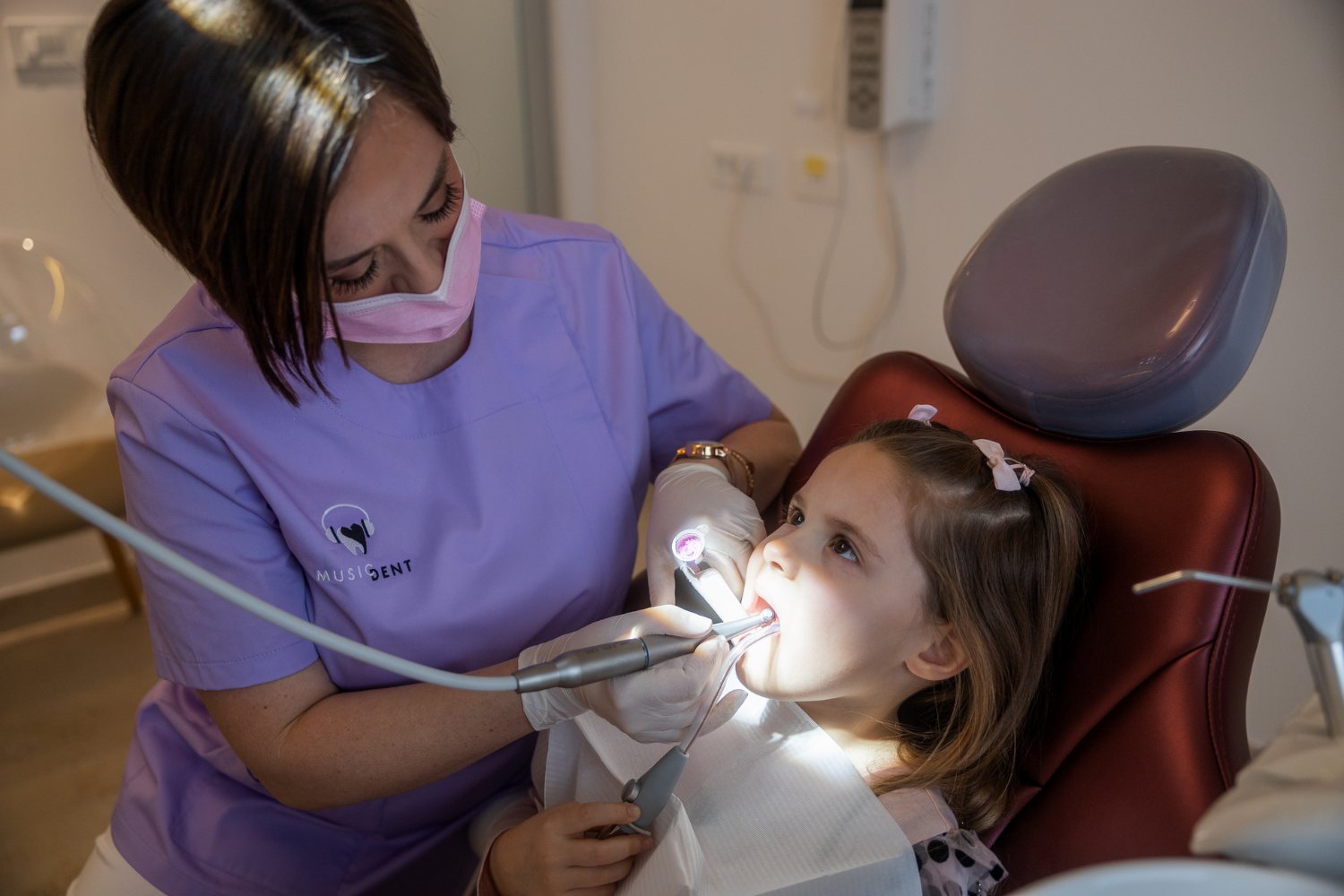Pediatric Dentistry

The First Dental Visit – Building Healthy Habits Early
The ideal time for a child’s first dental visit is within the first year of life, usually around the eruption of the first baby teeth.
This visit helps the child become familiar with the dental environment and allows parents to receive professional advice on oral hygiene and nutrition for their child.
A positive relationship between the child and the dentist is the foundation for lifelong dental health.
Forced or stressful treatments can cause dental anxiety or trauma, leading to long-term avoidance of dental care.
Early, gentle, and play-based exposure helps children feel comfortable, safe, and curious during their visits.
All procedures should be performed patiently and at the child’s pace, ensuring trust and cooperation.
Creating a sense of security helps the child view dental visits as pleasant experiences rather than something to fear.
Positive Experiences Build Healthy Smiles
Proper nutrition and good oral hygiene habits established early in life are essential for maintaining oral health.
Through playful demonstrations, children learn correct brushing techniques, while parents receive guidance on how to encourage daily oral care and healthy eating habits.

Preventive Measures in Pediatric Dentistry
- Regular check-ups every six months
- Fissure sealing of healthy permanent molars
- Topical fluoride applications to strengthen enamel
Combining preventive care, education, and a trusting relationship between the dentist, child, and parents ensures a lifetime of healthy, confident smiles.

Prevention and Education as the Key to Oral Health
Fissure sealing closes the natural grooves on the tooth surface, reducing the chance of food and bacteria getting trapped, while fluoride treatment strengthens the enamel and makes it more resistant to acids that cause tooth decay.
In cases of early childhood caries, the decay is removed and the tooth is restored using fillings specially adapted for children. The goal is to preserve the function and appearance of the tooth until it is naturally replaced by a permanent one, and to avoid the need for further dental treatment.
